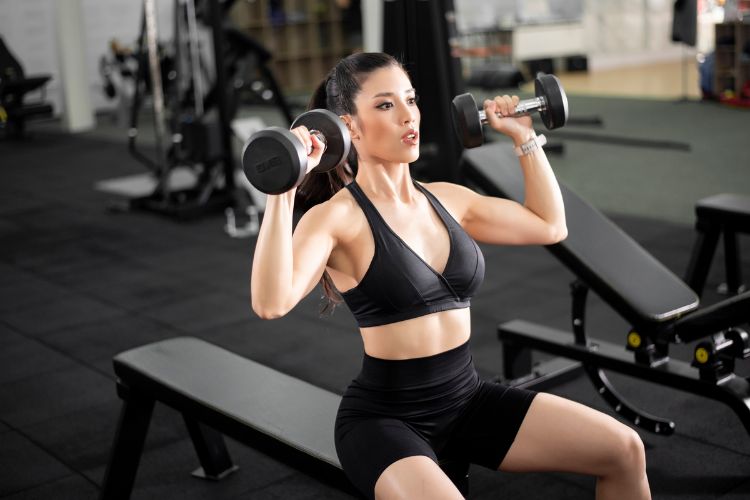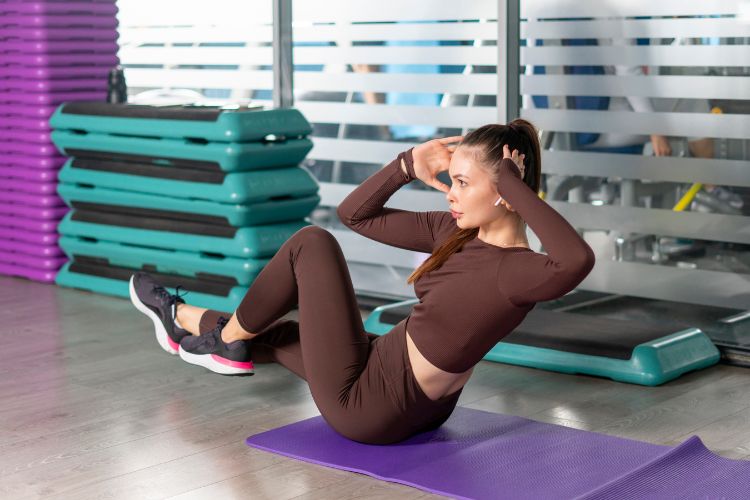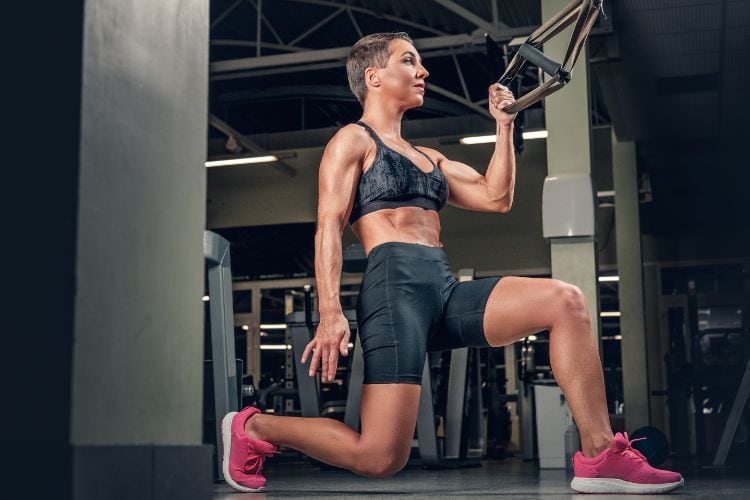The Best Exercise For Women Over 40 Building Muscle
As we age, our bodies undergo various changes that affect muscle strength, bone density, and flexibility. For women over 40, maintaining a fitness routine that adapts to these changes is essential to enhance longevity, mental health, and overall physical strength. This guide explores the best exercise tailored specifically for women over 40, focusing on workouts that improve strength, flexibility, and endurance while being gentle on the joints.
Why Exercise Matters More For Women After 40
Exercise is crucial at any age, but it becomes especially important after 40 due to several age-related shifts. From hormonal changes that can impact bone density to metabolism slowing down, physical activity can help mitigate these effects, boosting energy, mental health, and immunity. Below are some benefits of staying active as you get older:
- Improves Bone Health
- Supports Cardiovascular Health
- Boosts Mental Clarity and Mood
- Aids in Weight Management
Key Types of Exercise For Women Over 40
1. Strength Training: Building Muscle and Bone Density
Strength training is one of the most effective ways to build and maintain muscle mass and increase bone density, which becomes essential as the risk of osteoporosis rises with age. Here are some ideal strength exercises for women over 40:
- Bodyweight Exercises: Squats, lunges, push-ups, and planks are excellent for building strength without heavy weights.
- Dumbbell Workouts: Exercises such as bicep curls, tricep extensions, and shoulder presses target specific muscle groups and can be easily modified to fit any fitness level.
- Resistance Bands: These are gentle on the joints while still challenging the muscles and promoting stability and balance.
Tips For Effective Strength Training Exercise For Women Over 40
- Start with lighter weights or bodyweight exercises to prevent injury.
- Gradually increase the weight or resistance to encourage muscle growth.
- Perform each exercise with controlled movements for maximum benefit and safety.
2. Cardio Workouts: Boosting Heart Health and Stamina
Cardiovascular exercise helps keep the heart and lungs strong, improving endurance and reducing the risk of heart disease. The following low-impact options are ideal for women over 40:
- Walking or Jogging: Regular walks or light jogging are excellent for cardiovascular health and can be done anywhere.
- Swimming: A full-body workout that is easy on the joints, swimming is a great cardio exercise that also improves flexibility.
- Cycling: Whether stationary or outdoor, cycling offers a low-impact way to get your heart rate up without stressing the knees or hips.
Cardio Tips:
- Aim for at least 150 minutes of moderate cardio each week.
- Choose low-impact exercises if you experience joint pain or discomfort.
- Incorporate interval training (e.g., short bursts of high intensity) to boost calorie burn and endurance.
3. Flexibility and Mobility Exercise For Women Over 40
Flexibility and mobility exercises help maintain the range of motion in joints and prevent stiffness, both of which are essential for maintaining an active lifestyle as you age.
- Yoga: This practice improves flexibility, balance, and mental clarity, making it ideal for women over 40.
- Dynamic Stretching: Incorporate stretches that mimic movement, such as arm circles or leg swings, to enhance flexibility and prevent injuries.
- Pilates: Focuses on core strength and mobility, particularly beneficial for the lower back and hips.
Tips for Flexibility and Mobility Training:
- Dedicate time each day to stretching, especially after workouts.
- Focus on slow, controlled movements to avoid straining the muscles.
- Listen to your body and avoid pushing into discomfort.
4. Balance and Stability Training Exercise For Women Over 40
As we age, maintaining good balance and stability becomes critical to prevent falls and improve coordination. The following exercises target these skills effectively:
- Single-Leg Stands: Stand on one leg for as long as possible, then switch. This can be done anywhere and strengthens stabilizing muscles.
- Heel-to-Toe Walks: Walk in a straight line by placing one foot directly in front of the other. This helps improve coordination and balance.
- Balance Exercises on a Bosu Ball or Stability Disc: These tools challenge balance and core stability, making each exercise more effective for coordination.
Balance Training Tips:
- Practice balance exercises daily or a few times a week.
- Begin with basic balance exercises and gradually move to more challenging ones as you improve.
- Use a chair or wall for support until you feel comfortable balancing without assistance.
5. High-Intensity Interval Training (HIIT): For Efficient Calorie Burn
HIIT can be a beneficial addition to a workout routine, as it offers intense, short bursts of exercise followed by rest. This type of training helps burn calories, improves heart health, and can be adjusted for beginners to advanced levels.
- Beginner HIIT Circuit: Try a 20-second exercise, such as bodyweight squats, followed by a 10-second rest.
- Advanced HIIT: Incorporate more challenging moves, like burpees or jump squats, but ensure proper form to avoid injury.
- Modifications for Low-Impact HIIT: Replace high-impact moves with lower-impact options, such as step-ups or modified mountain climbers.
Tips for Safe HIIT Training:
- Warm up thoroughly before beginning HIIT workouts.
- Focus on form to prevent injuries, especially in high-impact movements.
- Limit HIIT workouts to 1–3 times per week to allow for recovery.
Creating a Balanced Weekly Exercise Routine For Women Over 40
For optimal results, a well-rounded exercise routine should combine all the types above, including strength, cardio, flexibility, and balance exercises. Here’s a sample weekly plan:
- Monday: Strength training (full-body) with dumbbells or bodyweight exercises.
- Tuesday: 30-minute cardio session (walking, cycling, or swimming).
- Wednesday: Yoga or Pilates for flexibility and mobility.
- Thursday: HIIT session with low-impact modifications as needed.
- Friday: Balance and stability exercises (single-leg stands, Bosu ball exercises).
- Saturday: Light cardio session (walking or light jogging) and stretching.
- Sunday: Rest or gentle stretching to promote recovery.
Nutrition and Recovery for Women Over 40
Proper nutrition and recovery are essential complements to any exercise routine. Here are some key considerations:
- Protein Intake: Essential for muscle repair and growth; include lean proteins such as chicken, tofu, or Greek yogurt in your diet.
- Hydration: Staying hydrated is critical for muscle function and recovery.
- Rest and Recovery: Allow time for recovery to prevent overuse injuries, especially as the body takes longer to recover with age.
Exercising after 40 can help improve strength, balance, and overall health, enabling women to lead a vibrant and active life. By incorporating a variety of exercise types—strength training, cardio, flexibility, and balance work—you can create a well-rounded routine that caters to your body’s needs. Whether you’re new to fitness or have an established routine, remember to listen to your body, prioritize recovery, and most importantly, enjoy the journey to better health.
Most Recommended





